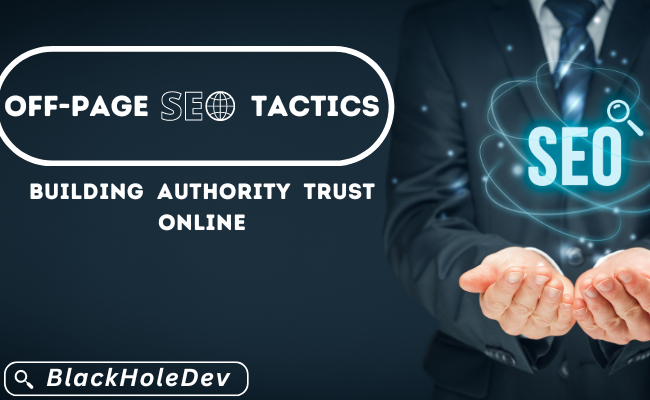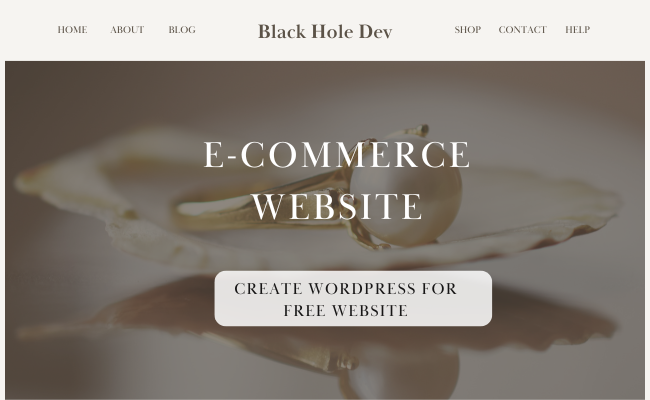Having a website is crucial for individuals and businesses in today’s digital world. Having your website may lead to a plethora of options, regardless of your industry or goals. It could be for small business owners, freelancers, or anyone looking to develop an online presence. However, if you’ve never done website development before, the process may seem overwhelming. For that reason, we’ve created this comprehensive guide to assist novices in navigating the thrilling process of creating their first website.Website builders can perform this duty. As a website developer, I’ll walk you through every step.
Greetings from Creating Your First Website. IT Services is a step-by-step guide for novices. Having a website is crucial for personal branding and corporate expansion in the modern digital environment. This all-inclusive guide, designed with beginners in mind, offers precise instructions and professional guidance to help you navigate the thrilling world of website development. Now let’s get going!
Planning Your Website
One of the most important steps in the website development process is planning your ideal website. Establish the site’s objectives and purpose first. We can get a lot of advantages from blogs on website. These blogs on website can serve as my showcase as well. Think about the goals you have for your website: information sharing, product sales, or product display. Next, determine the needs of your target audience.
Having a clear understanding of your target demographic will help your website development appeal to them. Finally, draw out how your website will be laid out, including where the various components like the content sections, navigation menu, and logo will be placed. A solid foundation for the remainder of the website development process can be created by taking the time to plan your website thoroughly.
Choosing a Domain Name and Hosting Provider

It is crucial to choose the correct domain name and hosting company before starting any website development. Make careful selections because your domain name is your online persona. Choose a name that accurately represents your brand and is simple to spell and remember. Furthermore, give careful thought to the hosting company, as this has an immediate effect on the functionality and dependability of your website.
Examine several hosting alternatives according to criteria including bandwidth, storage, customer service, and server uptime. Crucial phases in the ideal website development process are registering your domain and configuring hosting. Namecheap is the greatest hosting company nowadays, and it offers top-notch hosting services, provided you choose the appropriate domain name and hosting company.
Designing Your Website
When it comes to website development, practicality and creativity come together in website design. Choose a content management system (CMS) or website development that best suits your needs and ability level first. These platforms make the design process easier by providing a wide selection of templates and themes. Make sure that the template or theme you choose reflects the identity and design of your brand.
To produce a visually appealing website development, pay attention to aspects like the color scheme, typography, and graphics. For maximum brand awareness, use your logo and branding components consistently across the website. A vital component of excellent website development is website design, which affects visitor engagement and molds the user experience as a whole. Aim to develop the greatest website possible that works flawlessly on all devices and has an amazing appearance.
Creating Content

Developing engaging content is essential to website development if you want to engage users and accomplish your objectives. Determine which material will work best for your website by first considering the demands and interests of your target audience. Think about how you can benefit your audience with your content, whether it’s through educational blog entries, engrossing multimedia, or compelling product descriptions.
Add pertinent keywords and metadata to your content to make it more visible to search engines and draw in natural traffic. Make sure your writing is clear, succinct, and easy to read as well. Integrate text, photos, videos, and infographics to improve interaction and successfully communicate your message. Making the production of excellent content a top priority can improve website development and provide users with an experience they won’t soon forget.
Building Functionality
Your website must be both practical and user-friendly in addition to having excellent content and design. A homepage, about page, contact page, and any other pertinent pages for your website should be included first. Next, use widgets, forms, and plugins to improve your finest website’s functionality. There is a plugin or widget available to suit your demands, whether you require a social media feed, an e-commerce shopping cart, or a contact form. Last but not least, make sure your best website is mobile-responsive, which means it will work and appear great on all kinds of devices, including desktop computers, tablets, and smartphones.
5 most important things for a website development
- User Experience (UX): Prioritize intuitive navigation, responsive design, and fast loading times to enhance user satisfaction and retention.
- Content Quality: Deliver informative, engaging, and relevant content that addresses users’ needs, establishes authority, and encourages return visits.
- SEO Optimization: Implement effective search engine optimization strategies to improve visibility, drive organic traffic, and enhance the leading website’s ranking on search engine results pages.
- Security Measures: Ensure robust security protocols such as SSL certificates, regular backups, and software updates to safeguard user data and protect against cyber threats.
- Analytics and Monitoring: Utilize tools like Google Analytics to track website performance, understand user behavior, and make data-driven decisions to optimize and improve the overall effectiveness of the website.
Testing and Launching

Make sure your website is fully tested for flaws and issues before launching it to the public. Examine various browsers and devices for formatting problems, missing graphics, and broken links. When you’re sure everything is operating as it should, it’s time to publish your website. This entails putting your website up and running so that users may view it. This step could include more complex configurations or only the click of a button, depending on your hosting provider.
Promoting Your Website
You’ve launched your website, congratulations! However, your effort is not over yet. It’s time to advertise your website and draw users in. To begin with, use social media channels to interact with your audience and distribute your material. Use search engine optimization (SEO) techniques as well to raise your website’s ranking in search engine results. This entails enhancing the functionality and speed of your website, creating backlinks, and optimizing your content. Lastly, interact with your viewers by leaving a response to their questions, comments, and requests for feedback to create a feeling of community around your excellent website.
Maintaining and Updating Your Website

Creating a website is a continuous activity rather than a one-time event. Regular updates are necessary to keep your content current and relevant. To find areas that need work, track performance indicators like website traffic, bounce rate, and conversion rates. Address security issues further by updating your website development tools, putting security measures like SSL certificates into place, and routinely backing up your website to avoid data loss.
Conclusion
Although creating your first website could seem overwhelming, even for novices, it is completely doable with the correct help and resources. You can make a professional-looking website that effectively conveys your message, draws visitors, and aids in your goal-achieving by following this step-by-step tutorial. Recall that Rome wasn’t created in a day, so proceed slowly, exercise patience, and don’t hesitate to seek assistance when needed. Your website adventure is just getting started, and there are countless opportunities.
FAQs
How to Create a Website For Free?
A website can now be created for free thanks to a variety of easily navigable online platforms and tools. Consider using a free plan with basic features from website builders like Wix, Weebly, or WordPress.com to get started.
Create an account on the platform of your choice first, then choose a template that complements the topic or objective of your website. Using easy drag-and-drop tools, add your text, images, and other information to customize the template.
Next, customize your website’s design by choosing colors, fonts, and layouts that reflect your brand or personal style. Don’t forget to optimize your site for mobile devices to ensure a seamless user experience on smartphones and tablets.
Once your website is ready, you can publish it with just a few clicks and share it with the world. Keep in mind that free plans may have limitations, such as ads or restricted features, but they’re a great way to get started and learn the basics of website creation without breaking the bank.



